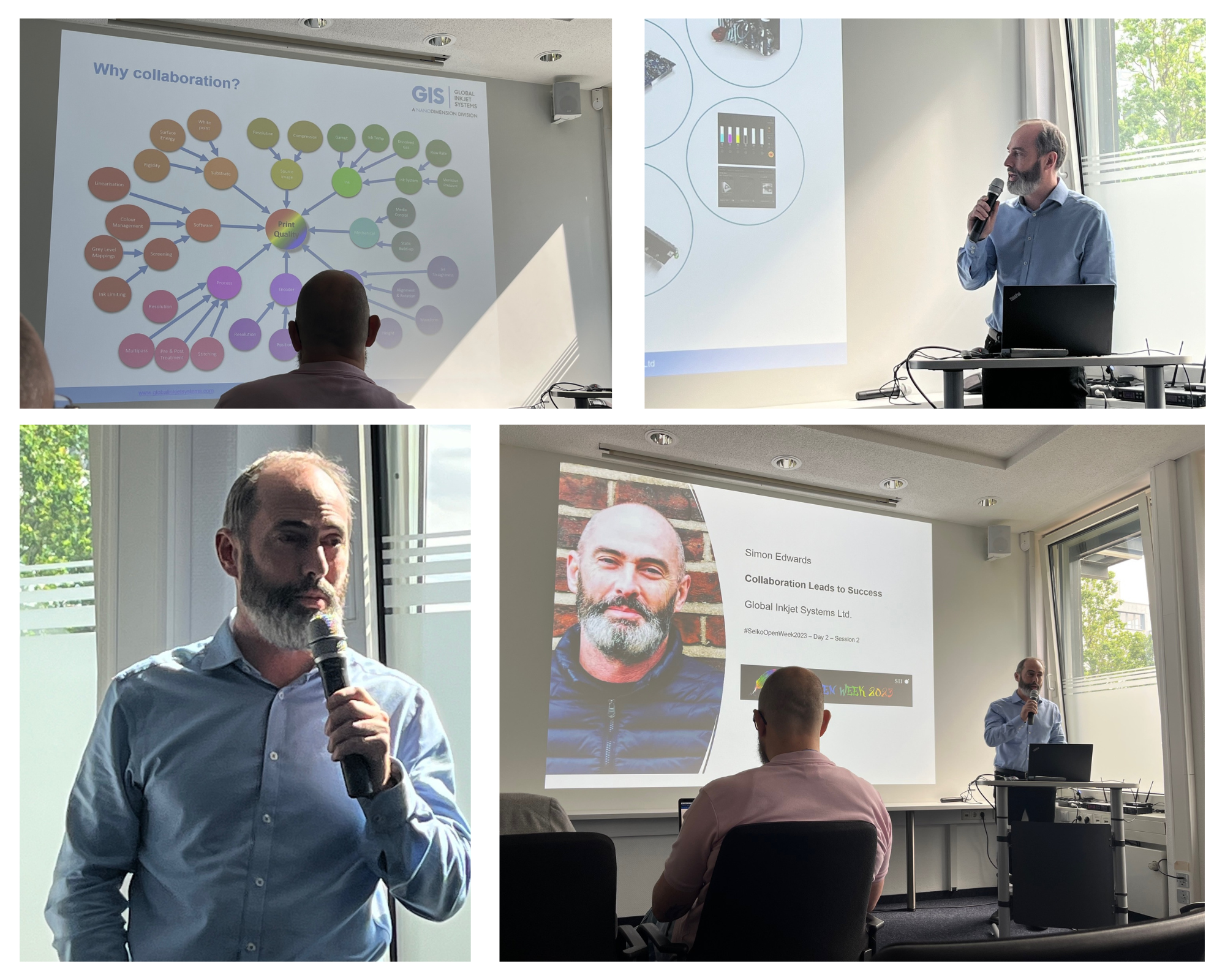Collaboration: The Key to Success in the Inkjet Industry
During the recent #SeikoOpenWeek2023 event in Germany, Simon Edwards, the Product Champion for Software Development and Hardware Electronics at Global Inkjet Systems (GIS), delivered a compelling talk emphasising the critical role of collaboration in achieving success within the inkjet industry.
Edwards, who has over two decades of experience in the technical aspects of the inkjet sector, highlighted the significance of teamwork and knowledge-sharing as essential factors in attaining optimal project outcomes. Acting as a bridge between technical development and product delivery, Edwards described himself as the gatekeeper responsible for aligning technical requirements with technology development to ensure successful end-product delivery.
As a division of the Nano Dimension Group, GIS is a prominent developer of high-performance software, ink / fluid delivery systems, and printhead drive electronics for industrial print systems. With a customer base of over 160 global clients spanning a wide range of applications, including packaging, labels, textiles, 3D printing and materials deposition for single pass and scanning systems, GIS has the advantage of drawing on its experience and learnings from one market application to assist in other sectors. This versatility allows GIS to overcome limitations posed by substrates or application types, enabling them to address the evolving needs of the inkjet market effectively. In this context, collaboration has emerged as a paramount factor. According to Edwards, collaboration involves the sharing of knowledge and the leveraging of collective expertise to jointly discover innovative solutions. Effective collaboration requires open communication and a willingness to work together among organisations and teams.
When embarking on the challenge of developing a new inkjet printing system, the question arises: where to begin? Given the intricate nature of inkjet printing systems and the interrelation of their components, engaging with manufacturers, and establishing partnerships early on, is crucial. The way collaboration is managed can profoundly influence the speed at which a printer reaches the market; it can determine the overall success of a project and can have a significant impact on the final product's reception in the market.
During the talk, Edwards outlined ten key points regarding collaboration, to enable a smooth journey:
1. Begin with the end in mind:
· Clearly define the printed output specifications and establish testing procedures.
· Determine metrics for assessing print quality and performance.
· Consider the minimum viable product (MVP) and ultimate profitability as separate factors.
2. View all stakeholders as potential collaboration partners.
3. Make informed decisions regarding the choice of printhead.
4. Develop a preliminary machine design based on input from industry experts.
5. Assess commercial viability and set realistic goals.
6. Establish a plan with stage gates that must be achieved before progressing to the next phase.
7. Simplify ink development, software integration, and printhead maintenance.
8. Prioritise the most demanding requirements when building a prototype.
9. Consider the complete picture, including integration into end-customers' operations.
10. Regularly synchronise with all stakeholders, even those who may initially believe their involvement is unnecessary.
Edwards examined the complexities of measuring project progress and determining success metrics, stressing the importance of setting objectives, accurately measuring the impact of improvements, and understanding market dynamics. The talk highlighted the critical role of commercial viability throughout the collaborative process. Companies must align their goals and expectations realistically while making informed business decisions.
Edwards continued to discuss the often-underestimated complexity of software development. The participants acknowledged the growing reliance on software across various industries and the challenges posed by high-speed data processing. Allocating sufficient time and resources to software development is crucial to ensure quality and avoid costly setbacks.
Maintenance and long-term support were identified as key considerations in collaboration. Designing products for ease of maintenance and incorporating feedback from end-users can significantly impact customer satisfaction and product success. Effective strategies such as prototyping, trade shows, and customer involvement were highlighted as ways to gain insights, refine products, and foster strong relationships.
In summary of this very well-received presentation, Edwards emphasised the need for ongoing collaboration and continuous improvement. Simon believes that collaboration is a journey which requires time, dedication, and a commitment to pushing boundaries. By actively collaborating with stakeholders, staying attuned to market demands, and focusing on commercial viability, companies can navigate the challenges of complex problem-solving and unlock the full potential of inkjet printing.
For more information about GIS please click here or email gis.info@nano-di.com

